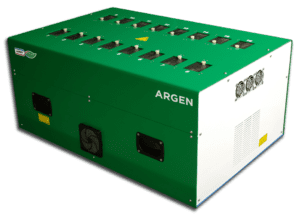

The technological success of the Senella® platform depends upon efficient vascularisation of the porous space within the implant volume such that the infiltrating tissue is adequately nourished.
Due to this, it is very important that the pore architecture of the implant is designed to maximise fluid flow (and maximize fluid contact with the implant surfaces).

Additive design and manufacturing provides us with nearly limitless architectural possibilities. However, it is cost prohibitive to prototype each possible variant in order to experimentally test the fluid flow behavior and surface contact area. CAE was incorporated at a very early stage of the implant design process in order to computationally simulate tens (or even hundreds) of possible design candidates. This refined the number down to a more manageable prototyping quota.

Expected results from working with SimScale in this project included a list of different design candidates which BellaSeno’s manufacturing team could prototype and perform physical flow testing on. This tight integration between CAD and CAE has already saved hundreds of man-hours in design and manufacturing optimization.
Implant geometries are very complicated and need to be evaluated in a three dimensional view to be understood and optimized efficiently. With standard simulation, the mesh would be too large and the simulations too computationally expensive to run on local PCs. SimScale has made it possible to run several incompressible CFD analyses on the cloud with full computing power, without the need to invest in expensive hardware.
For meshing, the hex-dominant automatic mode was used to generate 38 million cells meshes. The automatic mesher added refinements such as boundary layers, region and feature refinements. All these meshes were run using 96-core machines.

The unlimited amount of parallel runs in the cloud that SimScale offers to its customers allowed BellaSeno to run the different meshes at the same time with full computing power. This, as Mohit says, “saved a lot of time during the development phase”.
Incompressible fluid flow simulations were then performed still using the 96 cores instances. Velocity inlet, pressure outlet, and no slip walls were used as boundary conditions. These simulations took around 250 minutes to run on 96 cores.
The support team from SimScale provided us a good partnership to enhance our process optimization.
Mohit P. Chhaya
Co-founder and Chief technology officer at BellaSeno
BellaSeno used SimScale with Paraview and Matlab to visualize and export quantitative data. As a result, permeability value and fluid domain were considered as a criterion for selecting best geometries for their application, and were calculated from outputs such as volumetric flow rate at the outlet and pressure drop throughout the volume.

The next step for optimization would be based on challenges in manufacturing. These simulations took around 200 and 300 minutes to run, considering 96 cores.
BellaSeno continues to use SimScale to run different CFD and FEA analyses on the cloud as a way to speed up the product development phase and to save costs that would otherwise be spent on undeeded hardware and maintenance.






Sign up for SimScale
and start simulating now